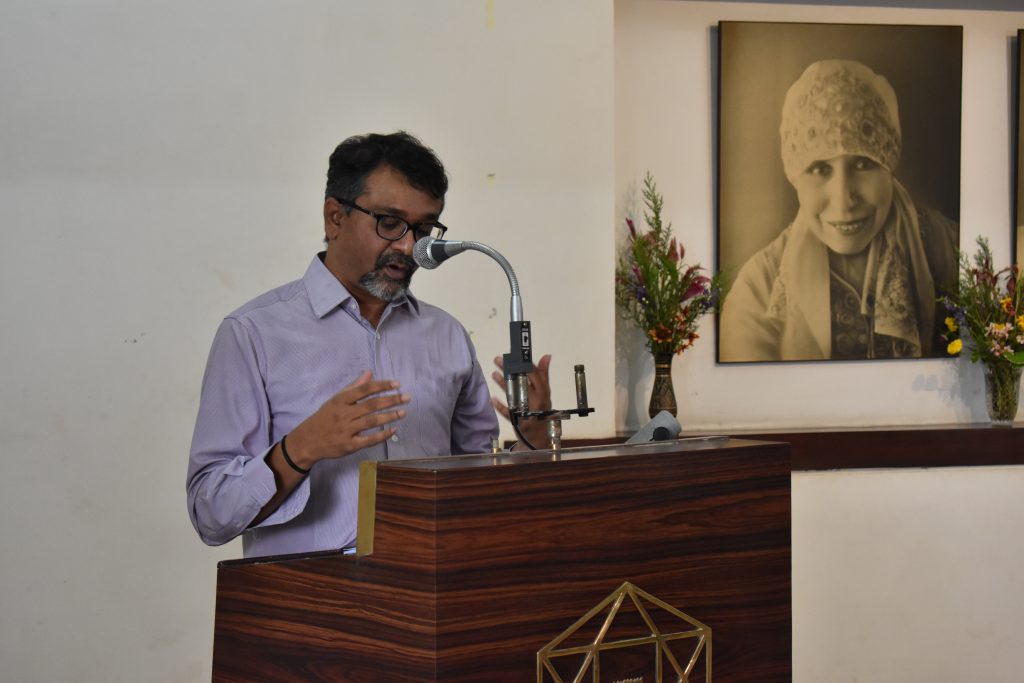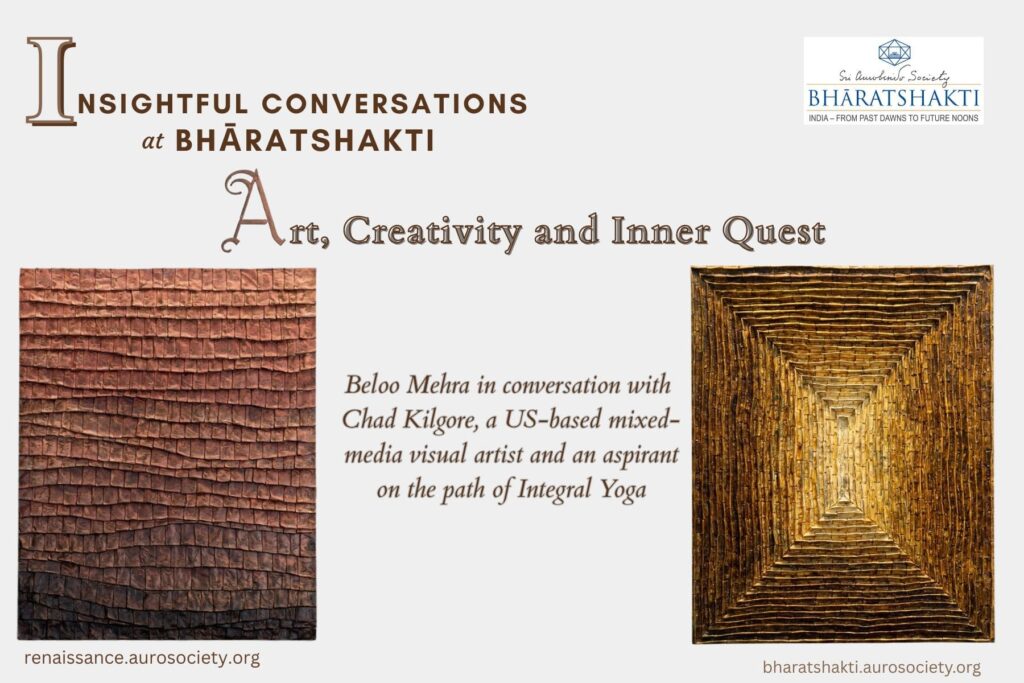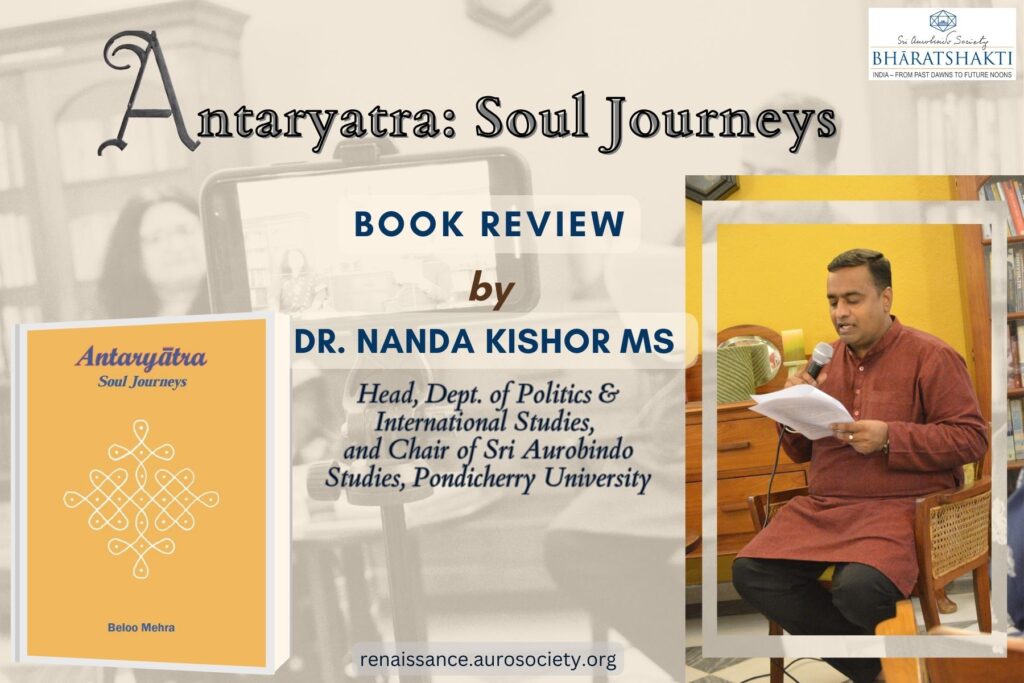Volume 1, Issue 8
Author: Beloo Mehra
CONTINUED FROM PART 2
Editor’s Note: In this concluding part, Sandeep Balakrishna shares some general advice for the youth of India so that they can rise up in their being, grow and expand their imagination and intellect, and be a positive force for India’s cultural renaissance.
Beloo Mehra: Now, a couple more questions before we close. And it is quite a switch from films.
To put it very simply, what do you think we need to do if we are to get back on the track? How can we really figure out, in a deeper way, from where we are coming, who we are as a society, as a nation, and what role India as a nation is supposed to play in the world? What kind of individual and national tapasya is required, because let’s face it – it is sincere tapasya that is needed?
In your talk yesterday, you were listing out all these books as your suggestion for the audience to go through to know Indian history. This is also a kind of intellectual tapasya – to know where we are coming from? But my question is this – in addition to this sincere intellectual work, what kind of inner work is required? Both Individually and as a society as a nation for us to rise up to that vision of an India our rishis spoke of?
Sandeep Balakrishna: Those are big words! But what was the reason why India was what it was. Today, you want to call it jagat guru, vishwa guru, light of the world, whatever. All good things, all true. But why it was so, what made it so? It is because of a strong social backbone.
Hinduism is made of communities which are integrated with very subtle threads, which are not visible but they are there. Our festivals, our attitude towards nature, our attitude towards all creation, these things were lived. Hinduism is a lived religion. You cannot learn it by books. Sorry, even your Vedas won’t help because at the most what will you do with them – chant them, use them for puja, but beyond that for what purpose?
How do you bring that vision into your life, your daily life – whether at your individual level, family level or at the community level or at national level? There’s a gradual gradation, right! So, unless they are implemented, unless this vision of India lives in blood and flesh, in other words, unless it lives through Hindus, unless you live that Hindu life, this cannot be achieved.
When in Mahabharata, we learn that for the sake of one village one family may be sacrificed, and for the sake of the nation, a village could be sacrificed, you know, like that …. Where does this come from? So yes, we were following these ideals subconsciously, like the way we breathe. That’s why we could withstand so much!
The resilience of Santana dharma is because it has this self-correction mechanism; no other religion has it. When things go so bad, no external force came and corrected it. The others came and invaded us, that’s different, that’s brute force. When things went bad within our communities, Santana dharma which has an automatic inbuilt correction mechanism, rose up to correct the path. Some Chaitanya Mahaprabhu would come, some Vidyaranya would come. How would they come? Why would they be born — because of this mechanism only! And how was this sustained? By people, by Hindus, by communities. That was the time then.
Why are people finding it difficult now? They ask – how can we rejuvenate this system now? How or when can we bring back one more Jadunath Sarkar? or When will next P V Kane be born? Why do they ask these questions now? There was a time when you step out of the house, you would breathe Hinduism because it would be in the air.
I’ll give you an example. Even today, go to some village, how is your typical lifestyle there. You wake up, you go to your lake. And all along the way you will hear some sound of temple bell. Instinctively, you’ll do this namaskar and come back. You’ll live through this your entire life, and the masses of people will live this life – in thousands and lakhs of villages, will live this for hundreds and thousands of years. Tab jake ye banta hai (Then only this system is made.) That backbone of this dharmic society has been broken …
BM: Let me just be a devil’s advocate here, you can’t go back in time, can you?
SB: No, you can’t turn the clock. But we can begin by strengthening the family system. You see, spiritual practices, Vedic practices, going to temples, reading Bhagvadgita will only bring you so much. But there’s something called practical life, the daily life.
Now the biggest hurdle for Hindus in the last 50-60 years has been that they are spending the majority of their day in earning livelihood. Earning your livelihood was not difficult in those days. Relatively speaking, of course. Why? Because it was the society based on commodity surplus of materials, food grains, vegetables or whatever. So, you really didn’t need to earn money, earn in the sense that we understand today – ‘to make a living’. So, when people – both husband and wife spend 10 -12 hours in office, what about the kids?
Something has to be done at the level of family. What can be done – to begin with, to reduce your wants, reduce your needs. Understand that your kids are more important, if you want your Sanatana Dharma to survive just another generation! Go for frugal living. When I say frugal living, it doesn’t mean you should live in poverty. But reduce your needs and get back on track. You know, it has to happen at the level of the family and community.

BM: So, what you are saying is that part of the problem is this hyper consumerist culture that has been very systematically and very deliberately shown as the lifestyle to aspire.
SB: Absolutely. Look, hyper consumerist culture originated in the US. We have seen what it has done to their society. And it is not only today that we are learning about it. There were warnings of hyper consumerism from 1960’s onward. From then on, this consumerism has only escalated. So, if it hasn’t worked there, or rather if it has destroyed the society there, how do you assume that if you replicate it in India the results will be different? Something to think of.
BM: One last question. As a writer and as a thinker, someone who has this very keen, sharp understanding of contemporary India, what would be your few words of guidance or advice that you’ll give those who are entering college or entering work force. How would you guide them so that they can be a positive force for India’s cultural renaissance?
SB: I have a cynical answer and a non-cynical answer.
The cynical answer is that nobody can guide, let alone teach the contemporary youth. I have seen them in various places, in various forums. Let alone teach, you cannot guide them or teach them, without suffering maybe physical injury (laughter). This is cynical answer.
The non-cynical answer is this – read good literature. Go for good classical music or any good music – not the kind that inflames you, not the kind that is meaningless noise arranged in some random order. Read good literature, read our epics first and foremost, read good literature from any part of the world. Could be Shakespeare, could be Tolstoy, could be Dostoevsky, anybody. That is number one.
And the other thing is this – just don’t go behind the latest fads. The most alarming trend I have seen in recent years is this explosion of a culture of putting on tattoos. I’ll suggest a very informed, a very scholarly essay by Theodore Dalrymple on this phenomenon. You must read it. He gives a beautiful analysis. This article is more than 15 years old.
So yes, I would tell the youth – don’t go behind these fads. And read or get exposed to different ideas. Do it yourself. since internet is free, and you all have data connection in your phone. You know, you don’t have to search too hard for anything, with very little effort it is all on your palm. So read what I call the masters – could be in any field, could be literature.
Slow down the pace of your life. It is difficult because of the amount of distractions you have today – I mean the moment you step out of the house and by the time you get back, the number of distractions is enormous. They are meant to be…I mean, all these distractions are there for a purpose. They are there, deliberately, to distract you from focusing on the deeper aspects of life.
Given that the youth today is actually swimming against the tide, these will be unpopular or old-fashioned opinions. But try and be old fashioned even for a day. I suggest a thought experiment. Anybody who wants to follow this path should try this for at least two days a week. Walk out of your house after your breakfast. Carry some food with you, but don’t carry any money. Do whatever you need to do throughout the day, and then come back. See how it works out, just do it as an experiment. Yes?
And yes, memorise a few classic poems. Perhaps that will show you a better path for the future. You need something real to feed your mind, something to expand your imagination. The whole point is this – when you expand your imagination, you are willing to create space within you, to fill in more stuff, more good quality stuff.
BM: Great! Thank you so much for sharing these insights, your observations and your thoughts. It was wonderful speaking with you.
SB: Thank you! It was indeed nice to discuss and share
these thoughts.
READ PREVIOUS PARTS – 1 & 2
Cover image: Photograph by Kyle Taylor under Creative Commons
Interview transcription credit: Isha Bidwaikar



